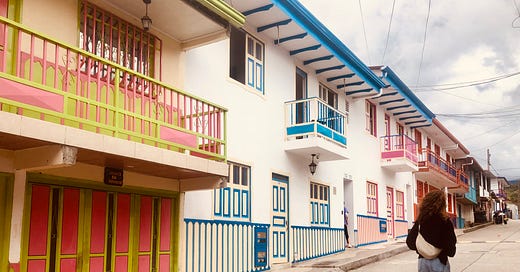Salento is a small town made up of colourful colonial houses, steep sloping streets and a lively plaza. It is also a popular gateway to the surrounding coffee zone, with its rolling fertile hills and iconic hikes. I invite you to learn from my shortcomings in this how-not-to guide. Along the way, you should also get a taste of the main activities on offer here – coffee farms and the famous Cocora Valley hike.
So, here’s how not to prepare – and why.
How not to prepare
1. Leave your jumper on the chair at home
I might be forgiven for omitting a warm layer when travelling in Colombia, if it wasn’t for the fact that I live in the coolest city here. This, and also the truism that rain had been pouring down for days prior to my overnight bus from Bogotá to Salento.
I had a theory that every place more than three hours’ drive down from the capital is bathed in sun. A very basic, ill-informed logic I had developed after a three-hour drive to Apulo, where I floated in a pool in 28°C/82°F all weekend.
Therefore, Salento was considerably milder than I'd anticipated, given that the town is around 750 m closer to sea level, compared with Bogotá. Cue my need to borrow my friend’s jumper every evening after the post-midday showers. Slightly embarrassing, given that all my clothes are in Colombia - and she packed for a five-week trip from the UK.
Salento weather
As it turns out, Salento is rainy and mild all year round, without much distinction between seasons. With an average temperature of 15.6°C/60.1°F - typically varying between 13°C/55°F and 23°C/73°F - it’s often most comfortable with a light jumper or cover up. This is particularly true during downpours, which are common.
2. Forget insect spray and socks on a coffee tour
This time, Bogotá is my defence. It’s too elevated for biting bugs here, but this isn’t true in the coffee belt. Ankles are definitely on the menu when you are wading through grass picking coffee cherries on your farm tour – a must-do in Salento.
I know this because I turned up in bare feet and my Birkenstock sandals (having been thrilled that this particular afternoon wasn’t chilly). One of my bites would go on to swell like a balloon, completely disguise my ankle, and delay my hike in Cocora Valley. Did I also forget to pack antiseptic and antihistamines? Of course.
Ocaso coffee farm
Still, the coffee farm tour was worth it. There are a few to choose from, but Finca el Ocaso comes most highly recommended. You’ll learn about Colombia’s high (and lower) quality coffee cherries, have your chance to pick the best ones, and taste the farm’s coffee at the end.
For me - a self-confessed coffee novice - the things around this tour are what really made the experience. The valleys and forests, vibrant green with banana trees, coffee plant shrubs, and dozens of other species typical to this World Heritage Site. From the farmhouse, there are nature trails you can take, along which you can often spot Colombia’s endemic hummingbirds and butterfly species.
Then there’s the jeep. From Salento town square, you will take a Willy’s jeep for 20 minutes to Ocaso – either by sitting inside it or hanging off the back. I fell into the latter category on the ride back. Putting aside my strained, tired fingers from gripping the frame, the views as we wound up and down the hillside were truly stunning.

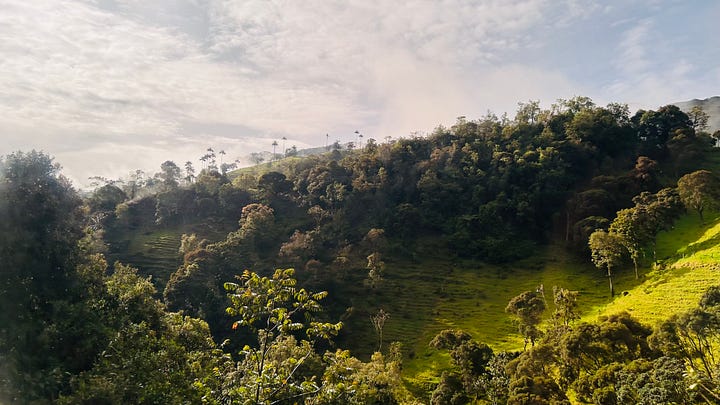
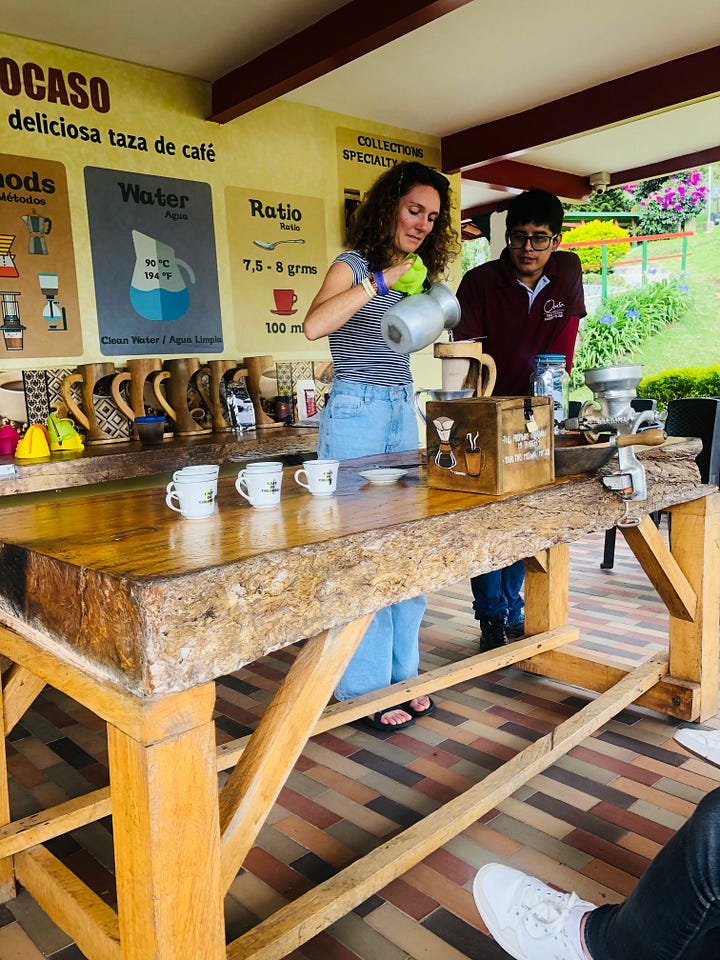
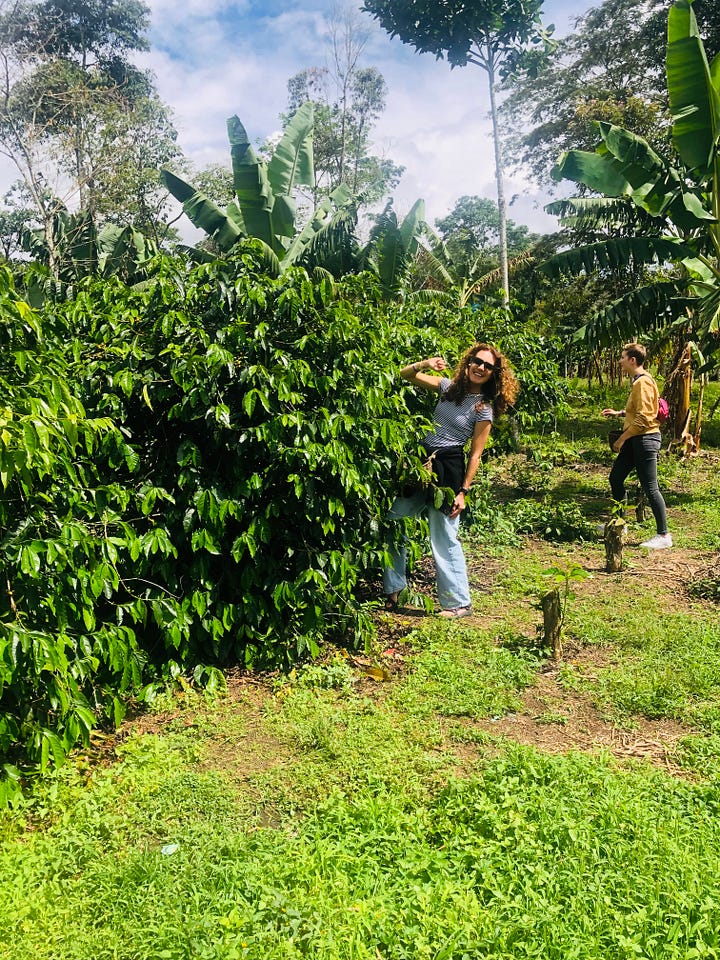
3. Decide you don’t need your proper raincoat
This was a big one. I still can’t recall my exact logic behind leaving my raincoat at home. I think it had something to do with saving space in my rucksack. Instead, I opted for a wafer-thin rain poncho I’d been given for free. I had also packed an umbrella.
On the Cocora Valley hike – over which it rained for three hours – this combination didn’t collect any points for style or practicality. Especially in contrast with the well-equipped, outdoorsy backpackers I walked with.
This said, my poncho-umbrella combo did protect me from the first hour of rain. Yet the limitations became obvious once the upward path became a muddy, slippery downward slope. First, the umbrella had to go, as I needed both hands for balance. Then the poncho ripped open around the shoulders as I flung my arms around.
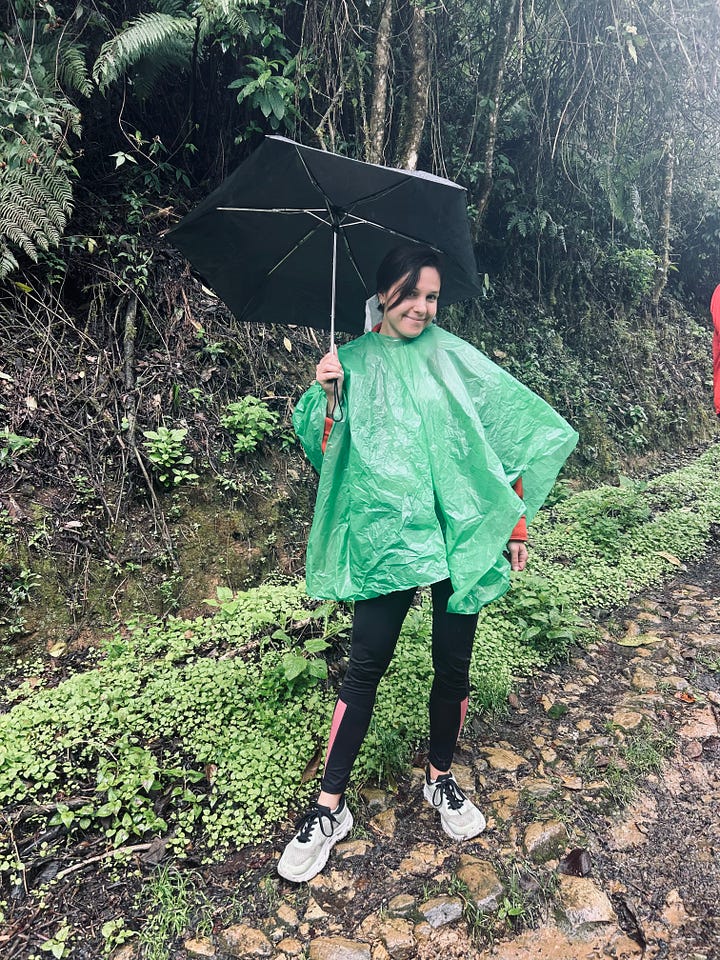
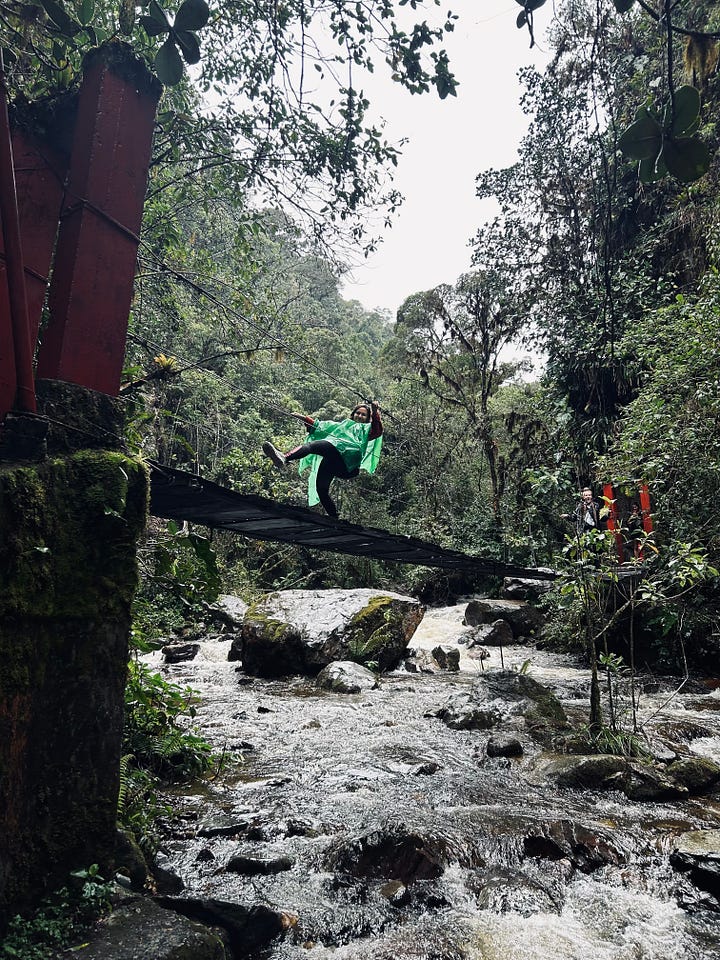
Cocora Valley
The six-mile Cocora Valley loop takes between 4-6 hours and involves gentle to moderate slopes, narrow rocky paths under the forest canopy, and ramshackle bridges over rapids. You’ll spend half of it going up and the other half descending – this order depends on which end you start at. Bring snacks, non-slippy footwear, and download maps.me so you can navigate the route offline. There may be a couple of points where the direction you take isn’t completely obvious.
Colombia’s native wax palms are the tallest in the world. This is what makes Cocora Valley iconic – and the scene is really striking in real life. These giants stick out of the landscape like needles in a pincushion, looking out of proportion and fantastical. Another personal highlight was passing through the cloud forest, fog hanging around me, painting the pine forest with an atmospheric grey-green haze. You’ll also find miradors (viewpoints) along the way, where wooden stalls offer hot passion fruit tea – which I highly recommend.
However, there were also some less impressive points. The entrance to the hike has been turned into a tacky tourist hot spot, complete with a giant “photo-op” hand for tourists to pose on. There’s even a slip-and-slide. Avert your eyes, run to your hike starting point and don’t look back, if you don’t want to associate wax palms with plastic, rainbow-coloured objects. This area was busy, and lots of people travel here just to stand on this hill, which also meant the wait for the return jeep was excessively long.
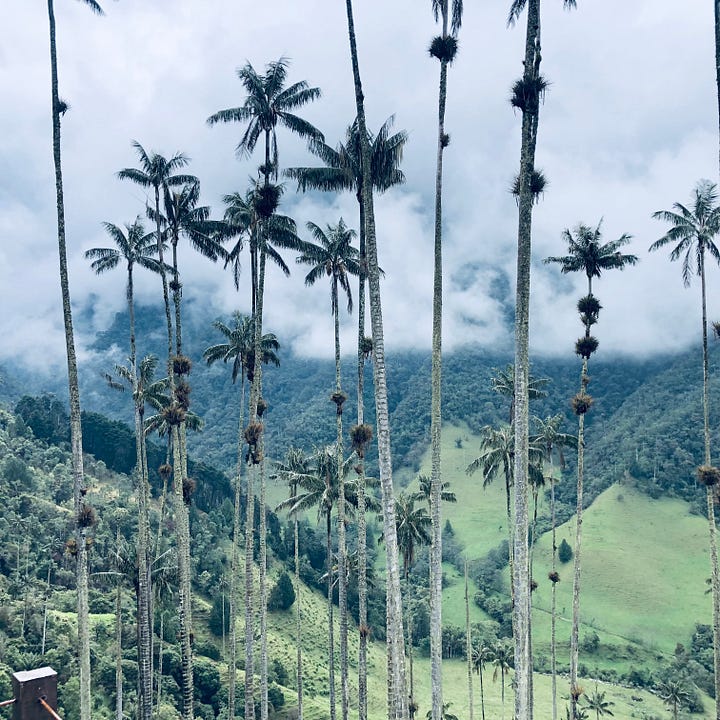
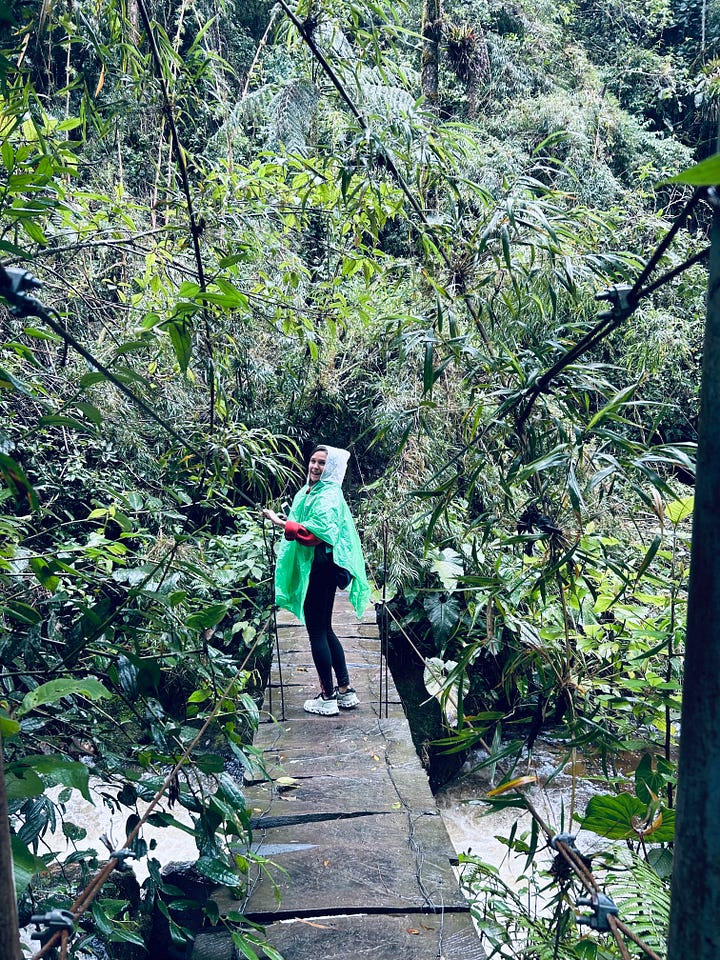
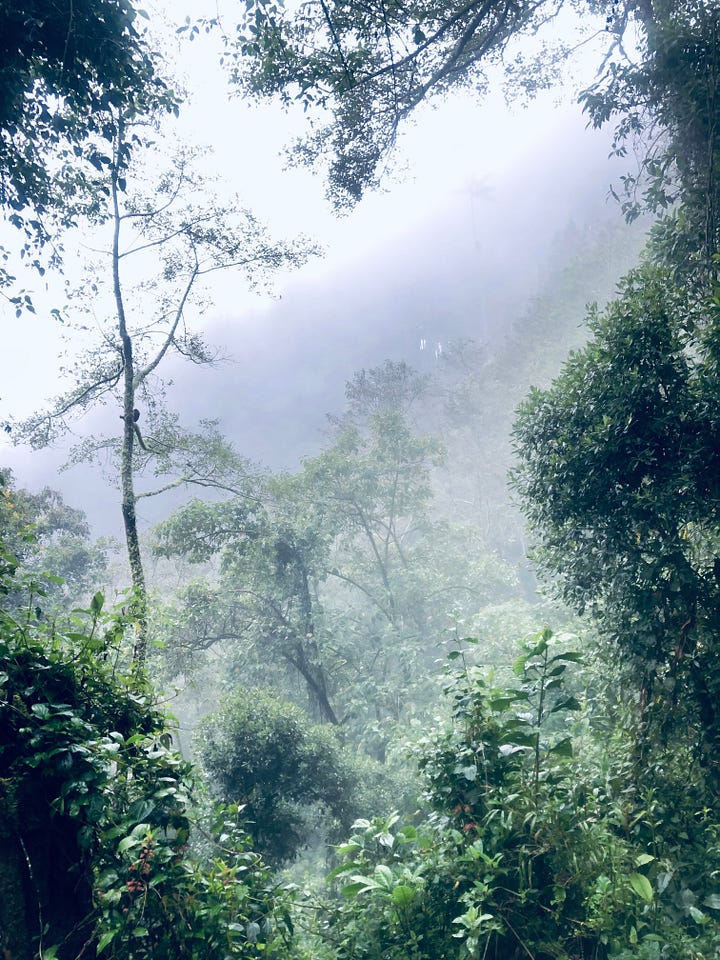
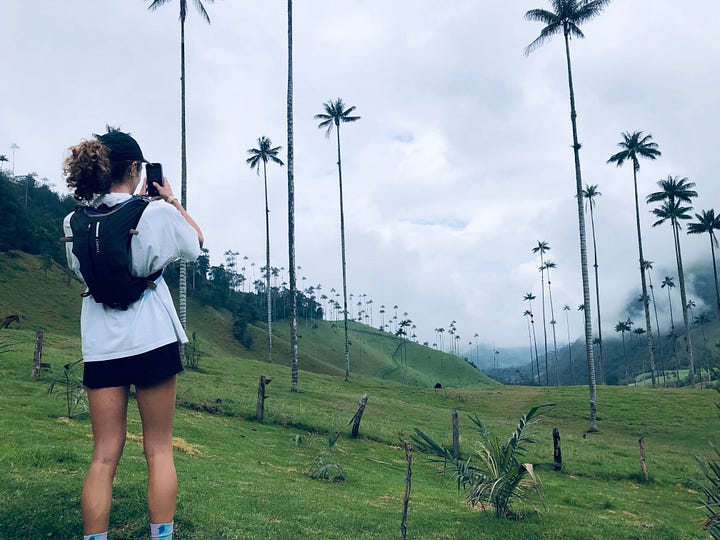
4. Don’t avoid the crowds
Actually, I only got this one partially wrong myself. If you don’t want Cocora Valley to feel busy, head there before 9 am (the first jeep leaves at 6.30 am). I started the hike around 8.30 - well done me – but it still meant that I had a long wait for a jeep at the end of the trail.
This is because I went on the Sunday of a long weekend (called a puente) and weekends in Salento are much busier. You can get back sooner if you’re willing to hang off the back of a jeep – something I don’t highly recommend doing in a flimsy poncho during torrential rain.
Salento and its tourism
I loved the activities, but as a destination I'm not sure that Salento totally charmed me. I expected this rural town, nestled in a World Heritage Site, to feel more authentic. The bright paint-palette houses are almost too pristine. Everything just feels a little too geared toward mass tourism, from the queues in the town square for tourist jeeps, to the dominating pizza/pasta restaurant theme (most poor quality).
This may be a little harsh. I did, after all, visit on a long weekend. Also, Salento’s popularity does mean that there are some good places to eat, buried amongst the pizza/pasta joints. Then there are other hidden gems, like the local snooker and tejo hall - a traditional game involving stones, sand and gunpowder.
Will I be returning? Absolutely. Not least because I already had the return trip planned – this time with my parents. But mainly because Salento fulfils its purpose: a comfortable base from which to access the surrounding nature – the true star of the show.

